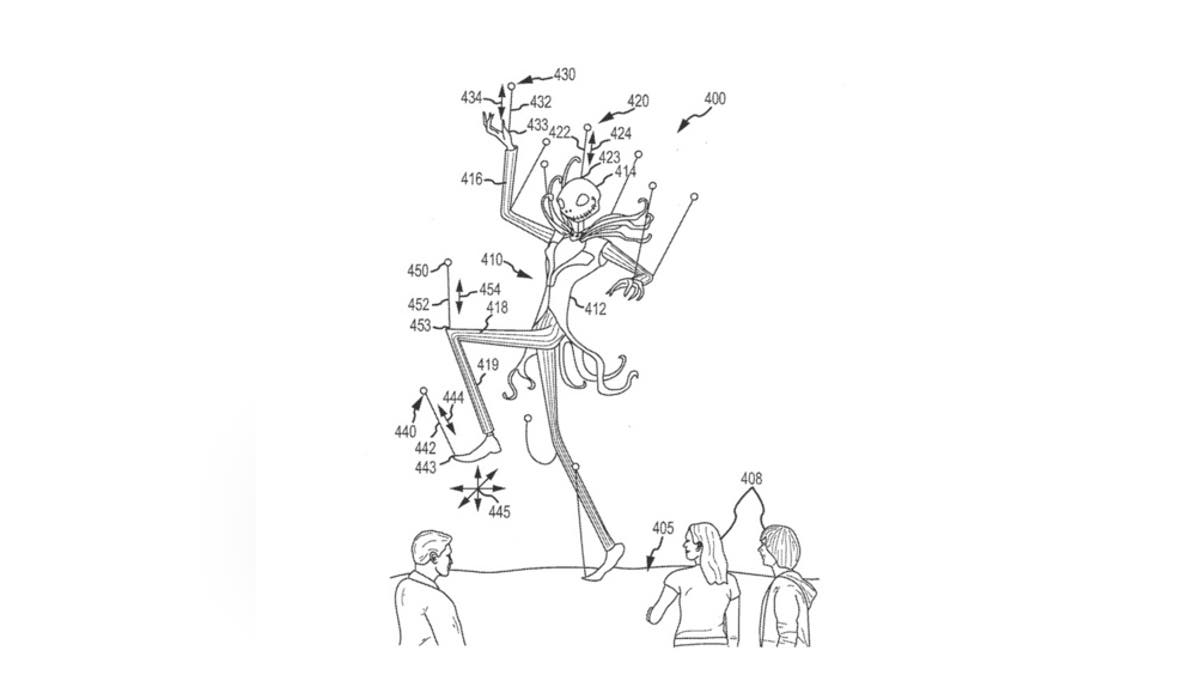
An illustration from a patent filed by Disney on Aug. 21 shows how drones could control a huge puppet's dance moves. ( U.S. Patent and Trademark Office)
Future visitors to Walt Disney World may come for the rides but stay for the drone show.
Last week, Disney filed for three drone-related patents, envisioning flying robots that could animate giant puppets, carry projection screens and even act as floating pixels, or "flixels," in virtual fireworks shows.
One patent application describes a system in which marionettes or helium-filled balloons could be tethered to and controlled by a fleet of synchronized drones, instead of puppeteers and handlers on the ground. The application even includes an appropriately creepy illustration of a drone-enabled, larger-than-life puppet of Jack Skellington from the film "The Nightmare Before Christmas" parading in front of a group of spectators. [5 Surprising Ways Drones Could Be Used in the Future]
Tiny unmanned aerial vehicles, or UAVs, that light up with their own display screens could act as single pixels in a digital light show, flashing colors to mimic fireworks, Disney's inventors say. Drones could also carry movable and flexible projection screens that could solve the limitations of current light shows that are beamed onto buildings and other fixed surfaces such as Hong Kong's nightly "Symphony of Lights."
"[T]here remains a need for new technologies for generating aerial displays such as a display involving projection of light and images into or out of the sky or an air space above an audience of spectators," the application for another patent reads.
According to MarketWatch, the three California-based men who applied for the patents Clifford Wong, James Alexander Stark and Robert Scott Trowbridge are all part of Disney's Imagineering team, the design and development branch behind the elaborate attractions at Disney's theme parks.
Though drones have long been associated with military and surveillance activities, cheaper technologies have paved the way for commercial and even scientific uses of UAVs to film movie scenes, to conduct archaeological field surveys and to deliver packages (as Amazon is hoping to do with its Prime Air program).
But before the industry can really take flight, the Federal Aviation Administration has to finalize regulations for commercial drone use. The agency hopes to do so by 2015, but in the meantime, commercial drones aren't legally allowed to leave ground. So far, the FAA has only given one company approval to conduct private UAV flights: In June, the agency granted a license to AeroVironment to fly its drones over an oil field in northern Alaska to perform surveys for the energy company BP.
It's not clear when and if Disney really hopes to roll out swarms of drones in its theme parks; the company did not respond to a request for comment.
